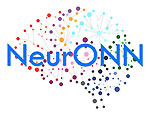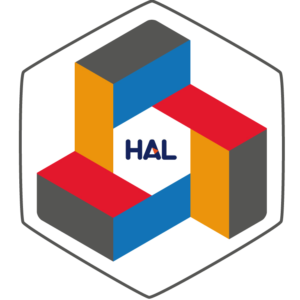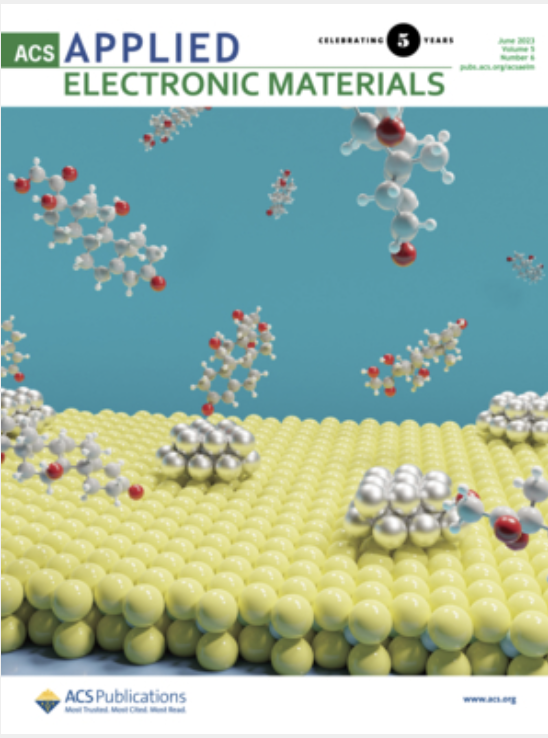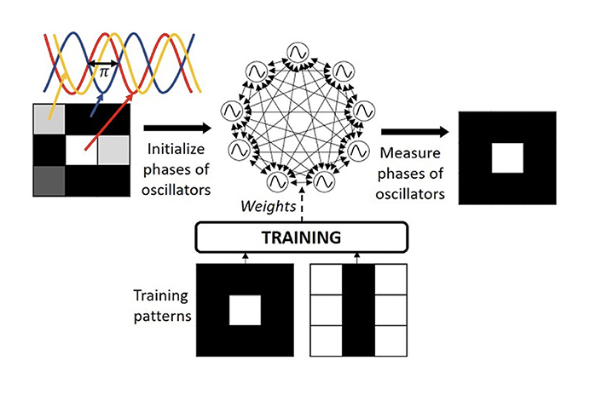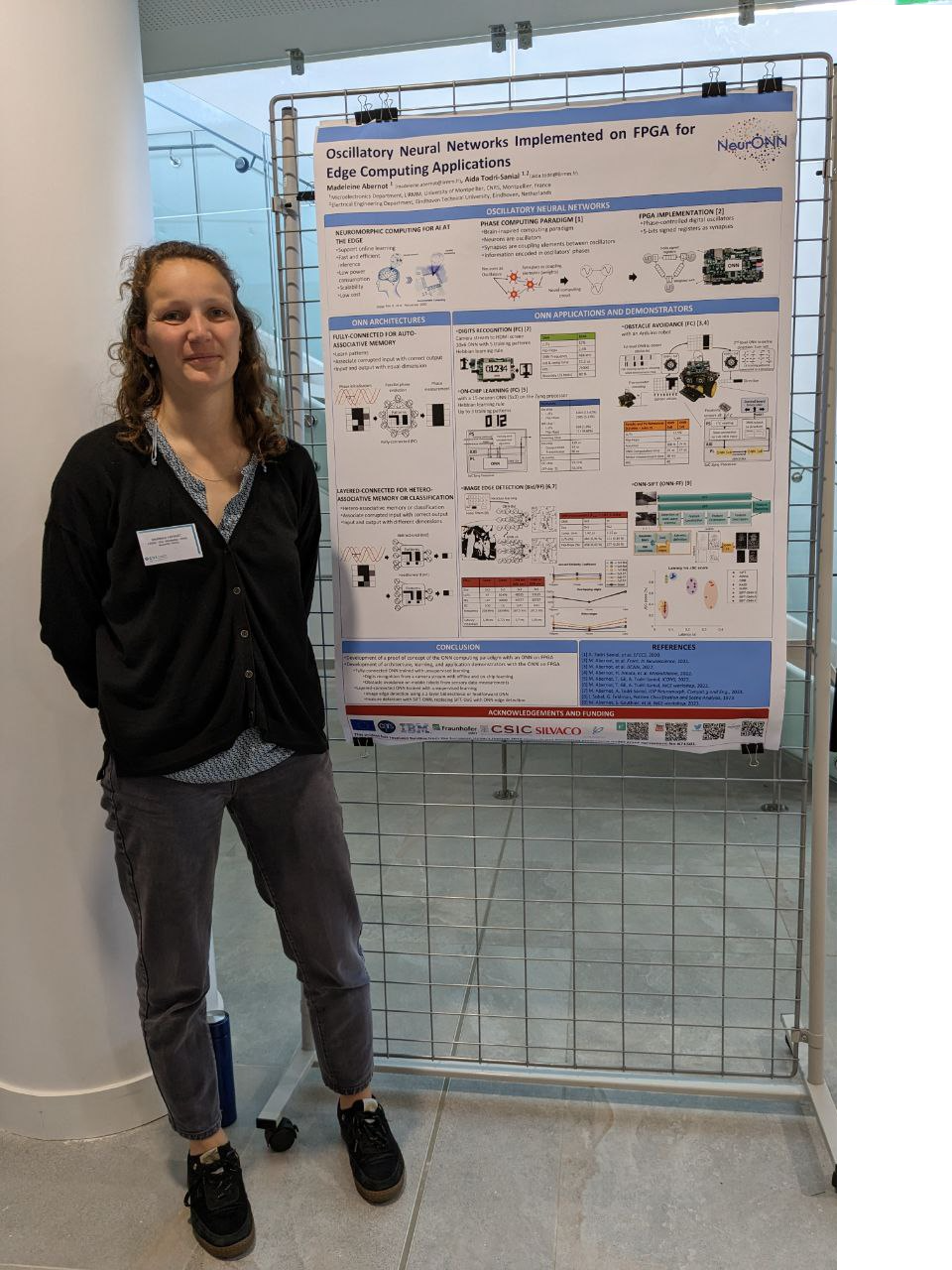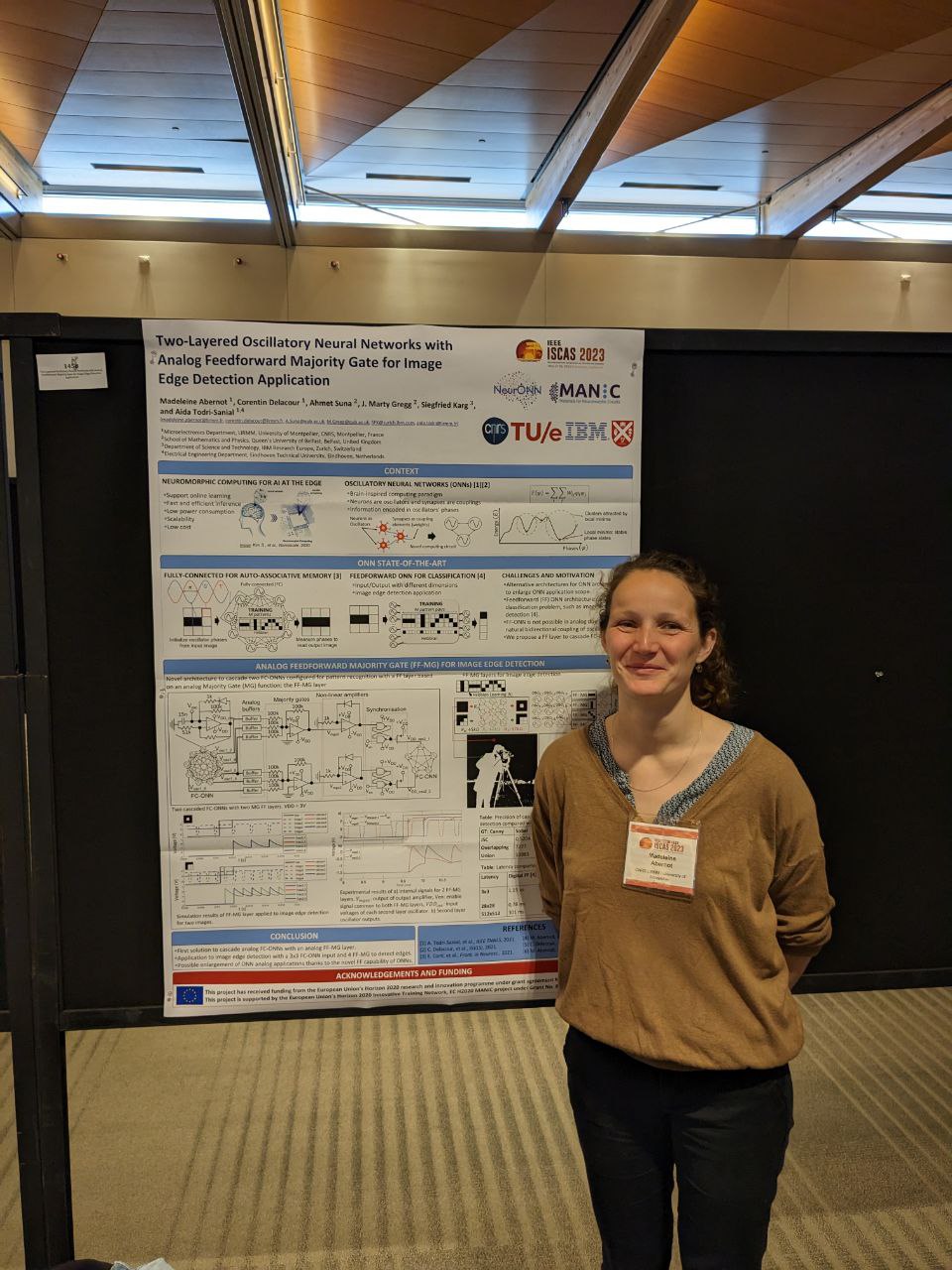Two-Dimensional Oscillatory Neural Networks for Energy Efficient Neuromorphic Computing
Aida Todri-Sanial, Thierry Gil, Nadine Azemard, Jérémie Salles, Stefania Carapezzi, Eirini Karachristou, Madeleine Abernot, Siegfried Karg, Elisabetta Corti, Kirsten Moselund, Bernabé Linares-Barranco, Maria J.Avedillo, Teresa Serrano-Gotarredona, Juan Núñez, Jamila Boudaden, Armin Klumpp, Théophile Gonos, Matthieu Rousseau, Tanguy Hardelin, Ahmed Nejim, “Two-Dimensional Oscillatory Neural Networks for Energy Efficient Neuromorphic Computing”, at HAL-LIRMM – Open Archive, April 2020. https://hal-lirmm.ccsd.cnrs.fr/lirmm-02530086
Abstract: Two-dimensional oscillatory neural networks for energy efficient neuromorphic computing The 4 th and 5 th of February 2020, in Montpellier (France), at the premises of LIRMM, CNRS the Kick-off meeting of NeurONN took place. All the Partners of the NeurONN Consortium met and set the ground for the activities along the three-year duration of the EU Project. NeurONN 1 is a research project funded by H2020 EU’s research and innovation programme with core subject “Energy-efficient bio-inspired devices accelerate route to brain-like computing”. The project with duration of 36 months (1 January 2020-31 December 2022) brings together leading European research and academic institutions. Neuro-inspired computing employs technologies that enable brain-inspired computing hardware for more efficient and adaptive intelligent systems. Mimicking the human brain and nervous system, these computing architectures are excellent candidates for solving complex and large-scale associative learning problems. The EU-funded NeurONN project will showcase a novel and alternative neuromorphic computing paradigm based on energy-efficient devices and architectures. In the proposed neuro-inspired computing architecture, information will be encoded in the phase of coupled oscillating neurons or oscillatory neural networks (ONN).
